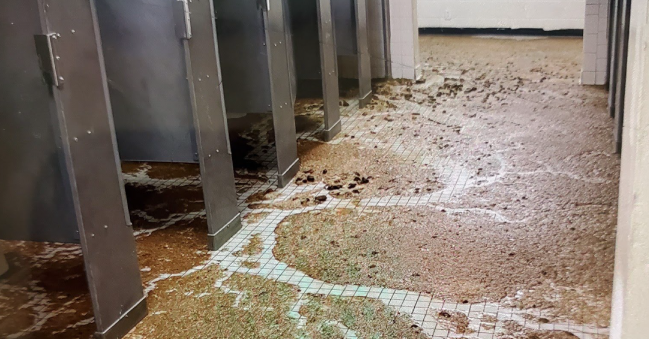

Sergeants leading runs and fitness drills “take it easier” on their junior troops who have to return to barracks filled with mold, rodent infestations, and unsafe conditions, an investigator told Congress Wednesday, while broken locks left others feeling unsafe and vulnerable, even to sexual assault.
Those findings came from a damning report from the Government Accountability Office looking into substandard housing for junior enlisted servicemembers. In a hearing Wednesday of the House Armed Services’ Quality of Life Panel, lawmakers heard how NCOs admitted they’d cut back on training “because they know they’re going home to the barracks at night,” according to Elizabeth Field, director of the GAO’s Defense Capabilities and Management office said at a hearing
Lawmakers pressed Field and housing officials from the Navy, Army, and Air Force on troop barracks “serious health and safety risks” cited in the GAO report. In all, the GAO found that housing often provided to newer military troops violated Defense Department standards for safety, health, and privacy.
In one instance, a servicemember told the GAO that living in the barracks made them feel “expendable, like we don’t matter” after numerous reports of black mold went unaddressed.
The report also found issues with working doors and locks which troops said made them feel unsafe. “Sexual assault happens in the barracks more than people think,” Field said, reiterating servicemember comments to the GAO.
Subscribe to Task & Purpose Today. Get the latest military news and culture in your inbox daily.
Panel Chairman Rep. Don Bacon (R-NE) called the conditions “deplorable and frankly inexcusable.”
GAO also found that the limited kitchen appliances in many barracks turn troops toward less nutritious frozen and fast food. A GAO report on broader military food and nutrition is set to be released early next year, Field noted.
Housing has long been a sore point for military leaders. Barracks can be government-owned, which includes permanent or training barracks or they can be privatized.
In 1996, Congress enacted the Military Housing Privatization Initiative which allowed DOD to obtain private financing and management to repair, renovate, build, and operate military housing. Now, private companies are responsible for nearly 99% of U.S. military family housing. The initiative also applies to unaccompanied service members.
Poor living conditions, lawmakers said, also impact recruiting.
“We have a challenge with recruiting,” said Rep. Marilyn Strickland (D-Wash.). “Word of mouth is very very strong if you want to address some of these quality of life issues. Housing is a basic need and it cannot be substandard.”
Housing representatives from the three branches told the panel that the DOD has improved the livability and quality of privatized housing but said that additional funding was needed to account for aging facilities.
However, lawmakers seemed skeptical that a lack of money was the primary issue. Bacon said there was a “disconnect” between the additional funding Congress has earmarked for military housing over the years and the declining barracks conditions.
“There’s something not right there,” Bacon said. “It does not add up.”
The DOD requested nearly $15 billion for “facility sustainment” for fiscal year 2024 but could not identify how much of that sum would be spent toward barracks for junior enlisted and did not track conditions or implementations to improve barracks, according to the GAO. The office called for better visibility and oversight into the DOD’s spending and improvement progress.
Carla Coulson, deputy assistant secretary of the Army for installations, housing, and partnerships said the report’s findings were due to the DOD “not looking closely” at deferred maintenance or investments, leaving the services to play “catch up.” She also said that progress should include preventative maintenance and sustainment.
Among the Army’s 6,700 barracks, 23% are classified as “poor and failing condition,” according to Coulson. She said bringing every barracks in the Army up to passing grade would require $6.5 billion in additional funding.
Privatization is “not a silver bullet,” Field told Congress after several members questioned whether more resources should go towards private housing. “Whether it’s government-owned or privatized, if you don’t pay attention, if you don’t fund, you’re going to end up with poor living conditions,” she said.
She also noted the Department of Defense’s missed July deadline to report to Congress on its joint approach to privatization.
The Navy and Marine Corps are the only two services that survey barrack residents, Field said. But none of the services routinely inquire about conditions affecting their decision to reenlist, which is a DOD requirement.
The GAO has recommended that the Department of Defense develop consistent standards across all services and distribute surveys on barracks. GAO also recommended policy reviews for barracks managers and their duties across the services.
The latest on Task & Purpose
- 101st and 82nd Airborne Division soldiers deploying to Eastern Europe
- Have you seen me? All the best ‘Missing F-35’ memes
- Marine Corps searching for F-35 after pilot ejects in South Carolina
- Senate bypasses Tuberville on Joint Chief nominations for Brown, George
- Search for missing Marine F-35B finds debris field